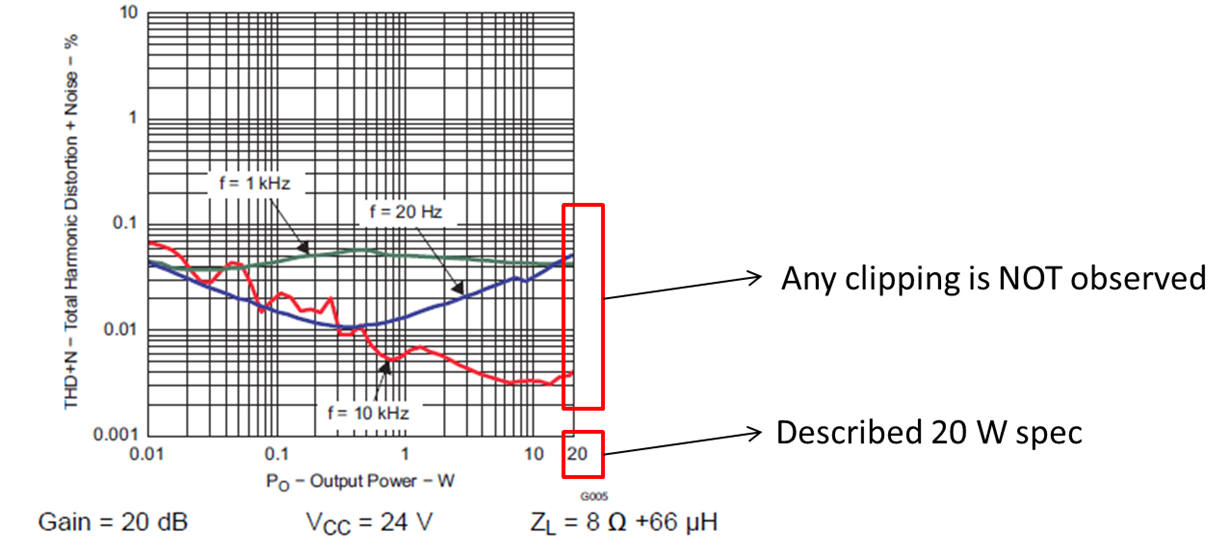Other Parts Discussed in Thread: TPA3112D1, TPA3111D1
Hi,
I would like you to confirm about below.
* According to datasheet, there is following spec.
![]()
However, on the other hand, it seems that this device have capability to realize 20 W output power from following figure.

Is it possible to use over 10W output power in this device (At least, we can see that we can use 20W output power from datasheet) ?
Best Regards,


